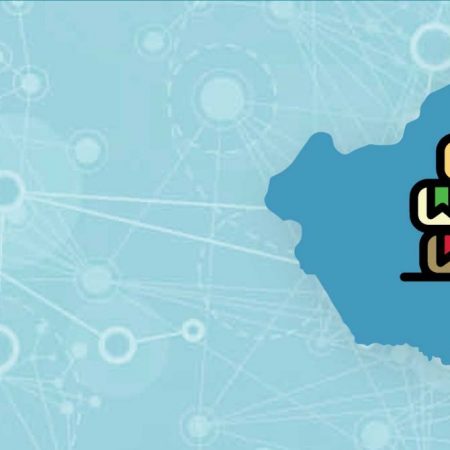Nutrition in Rajasthan
The nutritional status of children and women in Rajasthan has been poor. Despite efforts to tackle malnutrition in Rajasthan, 40.9 percent children under five years are underweight and 44.4 percent are anaemic, according to the Comprehensive National Nutrition Survey (2019).
Meanwhile, the government has implemented a range of interventions to tackle this problem. There are of two types. Nutrition-specific interventions that address immediate determinants (such as adequate food and nutrition intake, care-giving practices, low burden of infectious diseases) and nutrition-sensitive interventions that address underlying interventions (such as food security, access to health, hygiene etc.)
One of the biggest nutrition schemes run by the Government of India is the Integrated Child Development Services (ICDS) programme, which is implemented by Rajasthan’s Department of Women and Child Development (WCD). But implementation of nutrition interventions is not limited to the WCD Department alone. Education and health are some of the other departments that work towards multi-sectoral efforts to implement nutrition programmes in Rajasthan.
Mapping Governance: Nutrition in Rajasthan
The idea behind Mapping Governance is to use the Accountability Initiative’s research and on-ground experience over the years to help practitioners in civil society spaces better understand and navigate the government systems they work with.
Civil-society organisations play a pivotal role in facilitating access of communities to public services like health, nutrition, and education and improving developmental outcomes. Thus, it becomes imperative for them not only to be aware of the local government structures, but more specifically understand how large-scale social sector programmes are administered and financed, and where spaces for them to collaborate with the government exist.
In this context, Mapping Governance takes you through the complex administrative machinery that delivers key nutrition interventions in the state of Rajasthan.
This entire course is made up of 5 Maps. Each Map tells you the story of a different aspect of governance for the delivery of nutrition programmes. At the end of this bundle of Maps, you will be able to:
-
- [Theme 1] Identify the key functionaries involved in the delivery of the nutrition programmes in Rajasthan and what each of their roles and responsibilities are
- [Theme 2] Understand the extent to which nutrition services in Rajasthan have been decentralised to local governments
- [Theme 3] Recognise convergence efforts between different departments towards better nutrition outcomes and understand the complexities that such an exercise presents
- [Theme 4] Understand how the nutrition programme in Rajasthan is financed. This is currently unavailable.
- [Theme 5] Acknowledge the critical role played by civil society and citizen groups towards improving the status of nutrition in Rajasthan
- [Theme 1] Identify the key functionaries involved in the delivery of the nutrition programmes in Rajasthan and what each of their roles and responsibilities are
Course Features
- Lectures 27
- Quizzes 4
- Duration Lifetime access
- Skill level All levels
- Students 18
- Certificate Yes
- Assessments Self
-
Theme 1: Roles and responsibilities
- NR-T1 – What are the different levels of government involved in delivering nutrition?
- NR-T1 – Which departments of the government are involved with nutrition programmes?
- NR-T1 – Who are public representatives and what is their role in nutrition?
- NR-T1 – Who is involved in nutrition-related policy-making and implementation in Rajasthan?
- NR-T1 – Food for thought
- NR-T1-Quiz
-
Theme 2: Decentralisation
- NR-T2 – What is decentralisation? What does it mean for nutrition?
- NR-T2 – When did decentralisation get a big push in India?
- NR-T2 – What is the status of decentralisation in Rajasthan? To what extent has nutrition service delivery been decentralised?
- NR-T2 – How do inter-department mechanisms of grievance redressal impact decentralisation?
- NR-T2 – Food for thought
- NR-T2-Quiz
-
Theme 3: Convergence and complication
- NR-T3 – What does this organogram show?
- NR-T3 – What is convergence in nutrition?
- NR-T3 – How do committees enable convergence for nutrition?
- NR-T3 – Do convergence efforts in nutrition lead to complications?
- NR-T3 – What are some of the other complications that arise and why are they important to understand??
- NR-T3 – Food for thought
- NR-T3 – Quiz
-
Theme 5: Citizen-state engagement
- NR-T5 – What is citizen engagement and how is it important in nutrition?
- NR-T5 – What steps has the government taken to enable citizen-state engagement in nutrition??
- NR-T5 – What is the role played by non-governmental organisations (NGOs) and international development organisations in nutrition delivery in the state?
- NR-T5 – Food for thought
- NR-T5 – Quiz
- Tell us about your experience on Mapping Governance
-
Theme 4
- NR-T4-Why is it important to understand fund flows? How does the Union government share funds for nutrition programmes?
- NR-T4-What are the processes for Nutrition Service Delivery and provision for Nutrition Supplements? What role does the Supplementary Nutrition Programme play in improving the status of nutrition, and how does it reach beneficiaries at the AWC?
- NR-T4-How are nutritional supplements delivered to Anganwadi Centres?
- NR-T4-Where does the money come from for Nutrition service delivery? How do funds get devolved in Rajasthan?
- NR-T4-How is food grain delivered to beneficiaries?
- NR-T4-Food for thought





